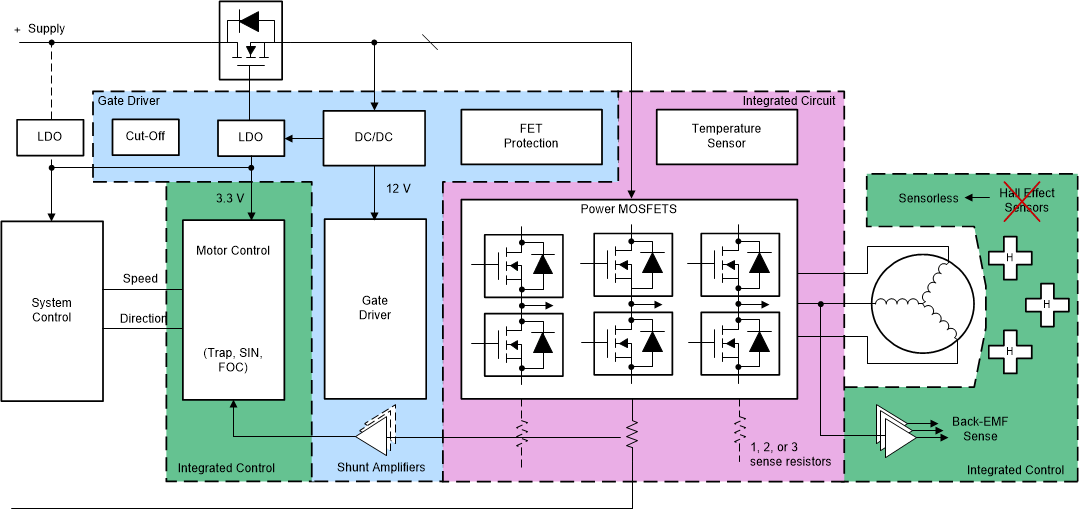-
Brushless-DC Motor Driver Considerations and Selection Guide
- Trademarks
- 1Motor Considerations and Why Brushless DC Motors?
- 2Motor Driver Architecture
- 3Texas Instruments' Brushless-DC Motor Drivers
- 4Conclusion
- 5Revision History
- IMPORTANT NOTICE
Brushless-DC Motor Driver Considerations and Selection Guide
Trademarks
All trademarks are the property of their respective owners.
1 Motor Considerations and Why Brushless DC Motors?
Brushless-DC (BLDC) motor usage is becoming more and more common for various applications due to the performance benefits they have over alternate motor types such as brushed-DC and stepper motors. As Table 1-1 shows, BLDC motors are more efficient, quieter, and have better power density, higher torque, higher speed, and longer lifetime when compared to brushed-DC and stepper motors.
| Motor Type | Pros | Cons |
|---|---|---|
| Brushless DC | Long life, quiet, optimal power density | Design complexity, higher cost |
| Brushed DC | Low cost, easy to use | Noisy, EMI wear-out, sparking |
| Stepper | Long life, quiet, open-loop position and speed control | Current control needed, not as power efficient as BLDC, noisy |
The significant benefits that BLDC motors have come with one important disadvantage: higher design complexity. Product development with BLDC motors requires knowledge of how to design an efficient system and get the motor to spin. Texas Instrument’s BLDC team is working to reduce this barrier to entry and simplify BLDC design with innovative motor driver devices. This document serves to simplify BLDC design by exploring the considerations in selecting a BLDC motor driver (Figure 1-1).
2 Motor Driver Architecture
The first step in selecting a BLDC driver is to determine what type of architecture is best suited for an application. Architectures range from integrated FET drivers for low- to mid-power applications up to gate drivers enabling multi-kW motor drive systems. In addition, TI’s BLDC portfolio offers integrated control drivers for both sensored and sensorless sinusoidal and trapezoidal control. Figure 2-1 illustrates the various motor driver architectures in TI’s BLDC portfolio such as gate drivers (Blue), integrated FET drivers (Blue + Purple, and sensored vs sensorless integrated control (Green + Blue or Green + Blue + Purple).
 Figure 2-1 Motor Driver Architectures
Figure 2-1 Motor Driver Architectures